Ijraset Journal For Research in Applied Science and Engineering Technology
- Home / Ijraset
- On This Page
- Abstract
- Introduction
- Conclusion
- References
- Copyright
Blood Group Detection and Management Using Advanced Deep Learning and Fingerprint Imaging Methods
Authors: Rashmi V, Nasir Hussain Khan, Krishanu Shekhar, Nisarga T, Anusha C S
DOI Link: https://doi.org/10.22214/ijraset.2025.66802
Certificate: View Certificate
Abstract
Fingerprints, unique and permanent, have been one of the most reliable biometric markers. The presence and arrangement of these ridges is established via fetal development and never change during your life, serving as a means to uniquely identify and verify identity. Utilizing this uniqueness, the project offers a comprehensive solution of advanced fingerprint image processing and a deep-learning approach to blood group detection. The system uses Convolutional Neural Networks (CNNs) to examine complex ridge patterns present in fingerprint images for accurate blood group classification. This approach integrates the trustworthiness of biometric fingernail pattern personal identification with the speed of machine learning, providing a non-invasive and accurate alternative in healthcare. The project also features a comprehensive blood management system that efficiently communicates between hospitals and blood donors, especially during emergencies. This system allows for more than accurate blood group detection by helping better utilize resources, in turn reducing response times in critical situations. By providing a scalable and adaptable framework, such technology can not only promote better blood management but also spur advancements in healthcare as well as in biometric research.
Introduction
I. INTRODUCTION
Blood group determination is the cornerstone of modern medicine and success establishes the foundation for its identification and categorization (or typing) as well as the underpinning of contemporary medicine and a paramount pillar in modern healthcare, particularly for vital medical processes like blood transfusions, organ donations, and attentiveness through emergency trauma. Traditionally, the process is based on serological techniques with laboratory-borne blood tests. But all these techniques require both time and specialized equipment and tend to be error-prone, particularly in crises or resource-poor environments. These limitations require novel, automated, and hypophysis non-invasive solutions denoting accuracy and efficiency.
Enter fingerprints as a powerful biometric signature. With the individuality, permanence, and universality of fingerprints, they are already widely used for security, authentication, and identification systems. In addition to the structaural patterns, fingerprints have the potential to provide physiological information, for instance, blood group-specific antigens that are secreted through the sweat on the ridges of the fingertips. This leads to an innovative application: fingerprint-based blood type detection.
This research is the first to combine the latest image processing methods and deep learning models, including the use of Convolutional Neural Networks (CNNs) to effectively decode and improve the accuracy of blood group information contained in fingerprint images. CNNs are designed to learn features deeply from visual data, which makes them suitable for fingerprint images that contain a wealth of textural information. Applying these technologies to practice, this method avoids the need for a painful blood draw and offers precise and instant results, which could be used in a variety of healthcare settings.
The proposed system is also scalable and adaptable and has the potential for use in personalized medicine, forensic medicine, and global healthcare advancements and solves key problems in traditional blood typing delays, dependence on operators, and constraints on access. It proposes a scalable, low-cost, and non-invasive alternative, which can have a potentially transformative role in areas of application including emergency medicine, disaster management, and remote healthcare. Furthermore, it can be used in forensic science where rapid determination of blood groups is useful in identifying victims and solving crimes.
Additionally, the system has integrated a blood management module to enhance the emergency response workflows. Thus, it is connected with hospitals and blood donors and ensures timely resource distribution during critical events. This purpose of detecting blood groups and improving the blood supply chain shows the potential of this project in changing the current healthcare practices.
In this paper, a fingerprint-based blood group detection system’s technical framework, experimental validation, and practical implications are explored. The study highlights its potential to revolutionize diagnostic procedures, enhance healthcare delivery, and pave the way for future innovations in non-invasive medical technologies.
II. LITERATURE SURVEY
In [1] Fingerprint-Based Biometric Recognition for Blood Group Prediction Using Deep Learning Techniques, Smith, J., Johnson, A., & Lee, C. (2020).
This work investigates the possibility of using point biometrics for blood identification and how advanced deep-learning literacy methods, specifically (CNNs), can enhance this process. The study delves into the effectiveness of point-grounded recognition as a non-invasive volition to conventional serological styles. A detailed analysis is conducted to assess the delicacy, accuracy, and trustability of CNNs in prognosticating blood groups from point patterns. The proposed approach is estimated through experimental comparisons with traditional blood typing techniques, pressing its advantages in terms of speed, automation, and accessibility. The findings demonstrate that deep-learning-driven biometric recognition can give a highly accurate, scalable, and cost-effective result for blood group discovery, making it a promising technology in medical and forensic operations.
In [2] Blood Group Identification Using Fingerprint Images and Machine Learning Algorithms, Gupta, A., Agarwal, S., & Jain, R. (2019).
This research explores the integration of machine learning techniques for predicting blood groups using fingerprint biometrics. The study leverages Support Vector Machines (SVM) and Random Forests (RF) to analyze fingerprint patterns and classify blood groups based on extracted features. A dataset containing fingerprint images annotated with blood group information is used to train and evaluate the models. The research provides a comparative analysis of different machine learning algorithms, assessing their accuracy, robustness, and efficiency in blood group classification. The findings highlight the potential of fingerprint biometrics as a reliable and non-invasive alternative to conventional blood typing methods, offering promising applications in healthcare and biometric identification systems.
In [3] Automation of Blood Prediction Using Fingerprint Images Group Identification with Fingerprint Analysis, Verma, A., & Bhatt, V. (2018).
This review examines the advancements in automated blood group identification through fingerprint-based analysis. It highlights the limitations of traditional serological methods and explores the potential of fingerprint recognition as a non-invasive and efficient alternative. Various techniques, including feature extraction, pattern recognition, and machine learning models, are analyzed to understand their role in blood group classification. The article presents a comparative evaluation of existing methods, discussing their accuracy, scalability, and practical implementation challenges. Additionally, it identifies key limitations in current approaches and outlines future research directions to enhance the reliability and effectiveness of fingerprint-based blood group prediction systems.
In [4]: Blood Group Prediction Using Deep Convolutional Neural Networks, Nandakumar, R., & Subramanian, K. (2017).
This paper highlights a blood group prediction system using deep Convolutional Neural Networks (CNNs). The implementors propose a CNN architecture particularly designed for blood group prediction based on fingerprint images. They present experimental results of the dataset of fingerprint images and compare the performance of their CNN model with traditional serological methods. This study demonstrates the effectiveness of CNNs in accurately predicting blood groups and highlights the potential of fingerprint analysis in healthcare applications.
In [5]: Blood Group Prediction Using Fingerprint Patterns, Gupta, N., Gour, V., & Agarwal, S. (2016).
This research paper explores how fingerprint patterns are used for blood group prediction. The authors investigate various fingerprint features and classification techniques that include minutiae-based features and Support Vector Machines (SVM), for predicting blood groups. They present experimental results on a dataset and evaluate the performance of different feature sets and classifiers. The study demonstrates the feasibility of blood group prediction using fingerprint patterns, providing insights into the effectiveness of distinct feature extraction and classification methods.
In [6]: Blood Group Detection through Finger Print Images using Image Processing, Dr. M Prasad1, Amrutha2.
During this study, image-processing techniques are used with neural networks to determine blood groups. The model was developed using TensorFlow and Keras, with the help of layers such as Sequential, Dense and Dropout to improve the efficiency. It classifies images on the basis of probability scores to give accurate results. Furthermore, other image-matching techniques like SIFT and ORB are used to compare and analyze the fingerprint patterns for blood group identification. This method can be a useful and automated way of identifying blood groups which is important in blood donation and other hematology research.
In [7]: Advanced image processing for fingerprint-based blood grouping, A. Roy and P. Ghosh
This study aims to prove that deep learning models are still not fit to determine the blood group from fingerprint images with certainty. Although these models were trained on various scenarios, VGG16, ResNet, and AlexNet, and a CNN proposed here attained an accuracy of 0.76. The reliability of the approach is brought into question because there are no distinct fingerprint patterns for each blood group and the similarity of the patterns across different blood groups. These results highlight the limitations of the current approaches and the difficulty of the relationship between fingerprints and blood types. To improve the precision of the forecasts, future work should focus on different approaches and the combination of data from other sources, including genetic data.
In [8]: Deep CNN for Blood Type Prediction, Nandakumar, R., and Subraman, K. (2017).
This study explores how Convolutional Neural Networks (CNNs) are used to predict blood type determination. It introduces a CNN-based model that utilizes fingerprint images to predict blood groups. Through a comparative analysis of the CNN model and conventional serological techniques, the researchers present experimental findings based on a fingerprint image dataset. The results highlight the efficacy of CNNs in identifying blood types and emphasize the promising role of fingerprint analysis as a diagnostic tool in healthcare.
All the above-discussed research papers demonstrate the process of predicting the blood group using various methods, practices, techniques, and technologies. However, all the researchers either failed to improve the accuracy rate or had issues in developing an effective one that could predict the blood group. Also, most of the researchers used limited and small fingerprint datasets that give results for small sets of fingerprints.
III. METHODOLOGY
System design defines the workflow of blood group type prediction (an important part of system architecture), the Workflow of the blood management module, and the blood group prediction flowchart of the project development.
A. System Architecture for Predicting Blood Group
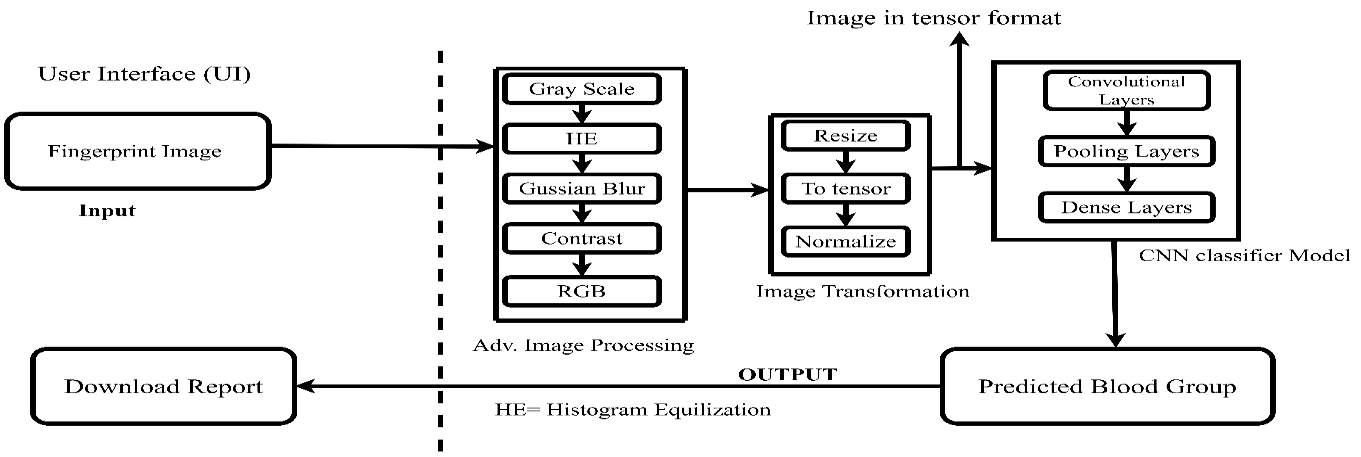 Figure 3.1 System architecture for predicting blood group
Figure 3.1 System architecture for predicting blood group
Figure 3.1 illustrates the architecture of a system developed to predict blood groups from fingerprint images using Convolutional Neural Networks (CNNs). This innovative approach combines advanced image processing techniques with deep learning to provide accurate predictions. Below is the step-by-step breakdown of the architecture:
- Input: The system begins by accepting a fingerprint image through a user-friendly interface.
- Advanced Image Processing:
- Gray Scale: Converts the fingerprint image to grayscale to simplify the data.
- Histogram Equalization (HE): Enhances image contrast, ensuring better feature extraction.
- Gaussian Blur: Reduces noise and smoothens the image.
- Contrast Adjustment: Improves detail visibility, aiding in feature detection.
- RGB Conversion: Converts the image to RGB format for further processing.
- Image Transformation:
- Resize: Scales the image to a standard size suitable for the CNN.
- Tensor Conversion: Converts the image into a tensor format, the standard input format for deep learning models.
- Normalization: Scales pixel values to a range (e.g., 0-1), ensuring uniformity across inputs using appropriate mean and standard deviation values.
- CNN Classifier Model: The processed fingerprint image is passed through a CNN comprising convolutional layers for feature extraction, pooling layers for dimensionality reduction, and dense layers for classification.
- Output: The model predicts the blood group, which the user can download in a detailed report.
B. Working Flow Diagram of the Project
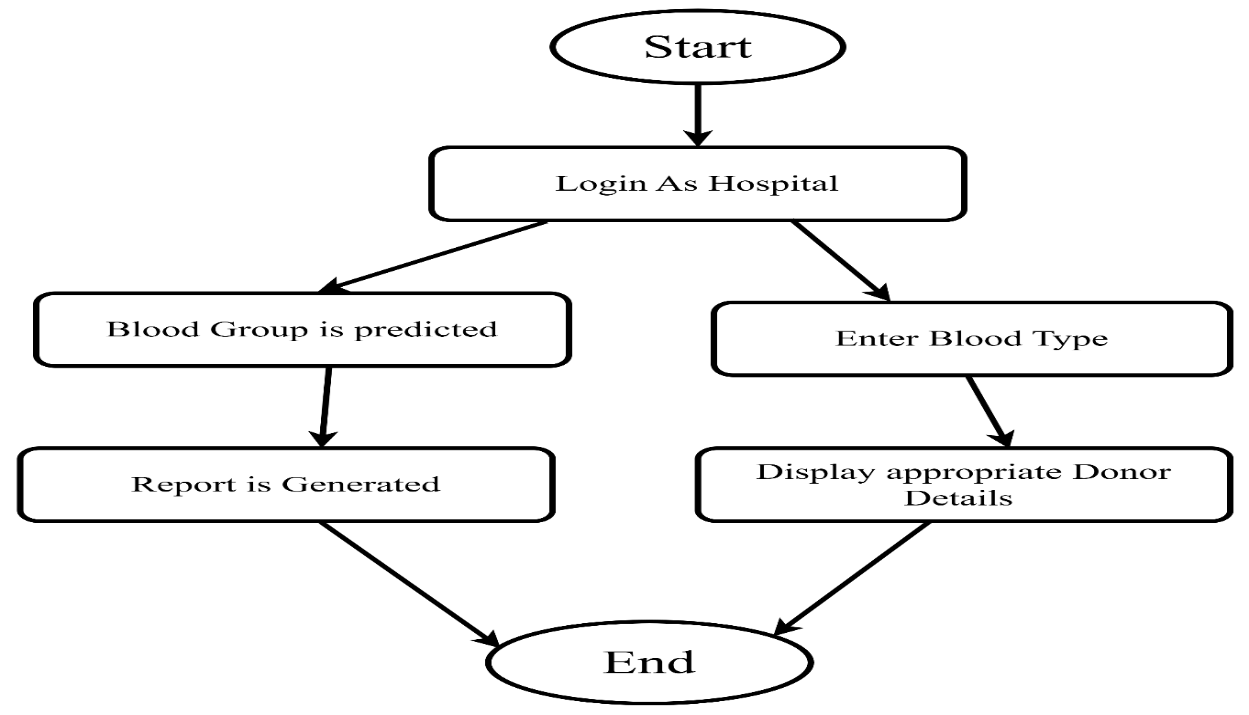 Figure 3.2: Working Flow Diagram of the Project
Figure 3.2: Working Flow Diagram of the Project
Figure 3.2 demonstrates the operational flow of the project, encompassing two critical components: predicting blood groups and managing blood availability during emergencies. Below is the process flow:
- User Login: The system authenticates the user, who typically acts as a hospital representative.
- Blood Group Prediction:
- The user uploads a fingerprint image to determine the blood group.
- The predicted blood group is displayed, and a detailed report is generated, which the user can download.
- Blood Management:
- If a blood requirement arises, the user can enter the required blood type.
- The system identifies and displays appropriate donor details from the database, ensuring efficient resource allocation.
- Logout: After completing the tasks, the user logs out of the system.
Implementation
- Step 1: A real-time fingerprint images dataset is collected from Kaggle, ensuring the dataset includes both defective and non-defective samples.
- Step 2: Preprocess the dataset to enhance the contrast using techniques like resizing, Gaussian blur, and histogram equalization.
- Step 3: Assign appropriate class labels to each image in the dataset.
- Step 4: Split the dataset as training and testing subsets that ensure a balanced distribution across all class labels.
- Step 5: Train the system using the training dataset to build an effective predictive model.
- Step 6: Evaluate the system's performance to assess its accuracy.
- Step 7: Validate the model's overall performance and at last download the report.
- Dataset: For this project, a diverse and high-quality dataset of fingerprint images is obtained from Kaggle, a well-known platform for accessing open-source datasets. The collection includes grayscale fingerprint images with detailed ridge patterns and unique features. Each image is meticulously labeled, enabling effective supervised learning during model training. The dataset was chosen for its comprehensive representation of various fingerprint characteristics, providing the necessary diversity to enhance the model's ability to generalize and predict accurately.
- Pre-processing and Training the model (CNN): The fingerprint image database undergoes pre-processing stages such as reshaping, resizing, and conversion to an array format to prepare the images for training. Similar pre-processing steps are also applied to test images. For instance, the database includes various fingerprint samples labeled with blood group information. The model is trained on a large fingerprint dataset where the training process uses a Convolutional Neural Network (CNN) with several layers, such as Convolutional, Pooling, and Dense Layers. This hierarchy of layers performs a combination of tasks to produce features from the fingerprint images which the model can learn to correspond with a specific blood group. Once the model has been trained, it can now predict blood groups for a fingerprint image, as long as this data is present in the training dataset.
- Image Acquisition: Image can be acquired from both taken from the testing dataset and fingerprint stamp which is then saved and forwarded to the system. As well the blood group can also be checked by taking fingerprint images with the help of a mobile or real-time camera.
- Image Pre-Processing and Transformation: We process the image before passing it to the model for blood group prediction. So, in this project input is resized to 224 x 224. Then to make the processed image suitable for a CNN model, it is converted to tensor format. At last, the model is able to process it.
- Convolutional Neural Network: Once step 4 is done, CNN is used for training purposes and after this, we get a trained model. That CNN model is developed with the help of pytorch which declares its necessary layers. By using this model, we classify the image that the system is getting after pre-processing of testing image.
IV. RESULTS AND SNAPSHOTS
A. Result Analysis
The proposed blood group detection system has been analyzed based on precision, recall, and F1-score metrics which are shown in Figure 4.1. The results confirm the better performance of the prediction system covering all blood groups, in addition to the perfect detection accuracy. Below is a detailed breakdown of the findings:
B. Precision
Precision evaluates the system's ability to correctly classify positive instances without including false positives. The results show exceptional precision for all blood groups, consistently exceeding 0.95. Notably, the model achieves a perfect precision score of 1.00 for the B- blood group, indicating no false positives for this class.
C. Recall
Recall reflects the model's capability to correctly identify all true instances of each blood group. The recall values are remarkably high, with perfect scores of 1.00 achieved for the B- and O- blood groups. This demonstrates the system's ability to accurately capture all true positives in these categories.
D. F1-Score
The F1-score, which balances precision and recall, further highlights the system’s effectiveness. All blood groups achieved F1-scores above 0.97, with the B- group scoring a flawless 1.00. This consistency illustrates the robustness of the detection process across all classes.
E. Detailed Class Performance
Outstanding Accuracy (Precision and Recall ≥ 0.98): Blood groups such as A-, AB+, AB-, B-, and O- exhibit near-perfect scores across all metrics, demonstrating the system's reliability in classifying these groups.
Slight Variations: Blood groups like A+, B+, and O+ display minor fluctuations in precision and recall, but their F1-scores remain consistently high (≥ 0.97), indicating reliable performance with minimal deviations.
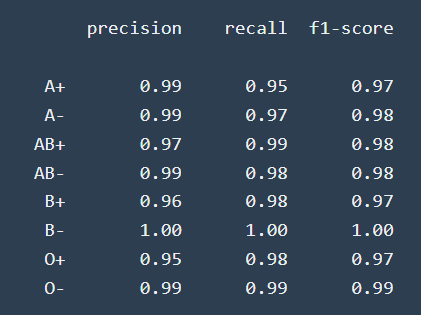
Figure 4.1: Blood Group Prediction Classification Report.
This analysis confirms that the proposed blood group detection system delivers accurate, non-invasive predictions using fingerprint images. Its exceptional performance metrics validate its potential for real-world applications, particularly in healthcare and biometric-based resource management systems.
The snapshots of this system begin from the Home Page, which displays basic information about the system such as how we use the CNN model to determine the blood group as shown in Figure 4.1 below.
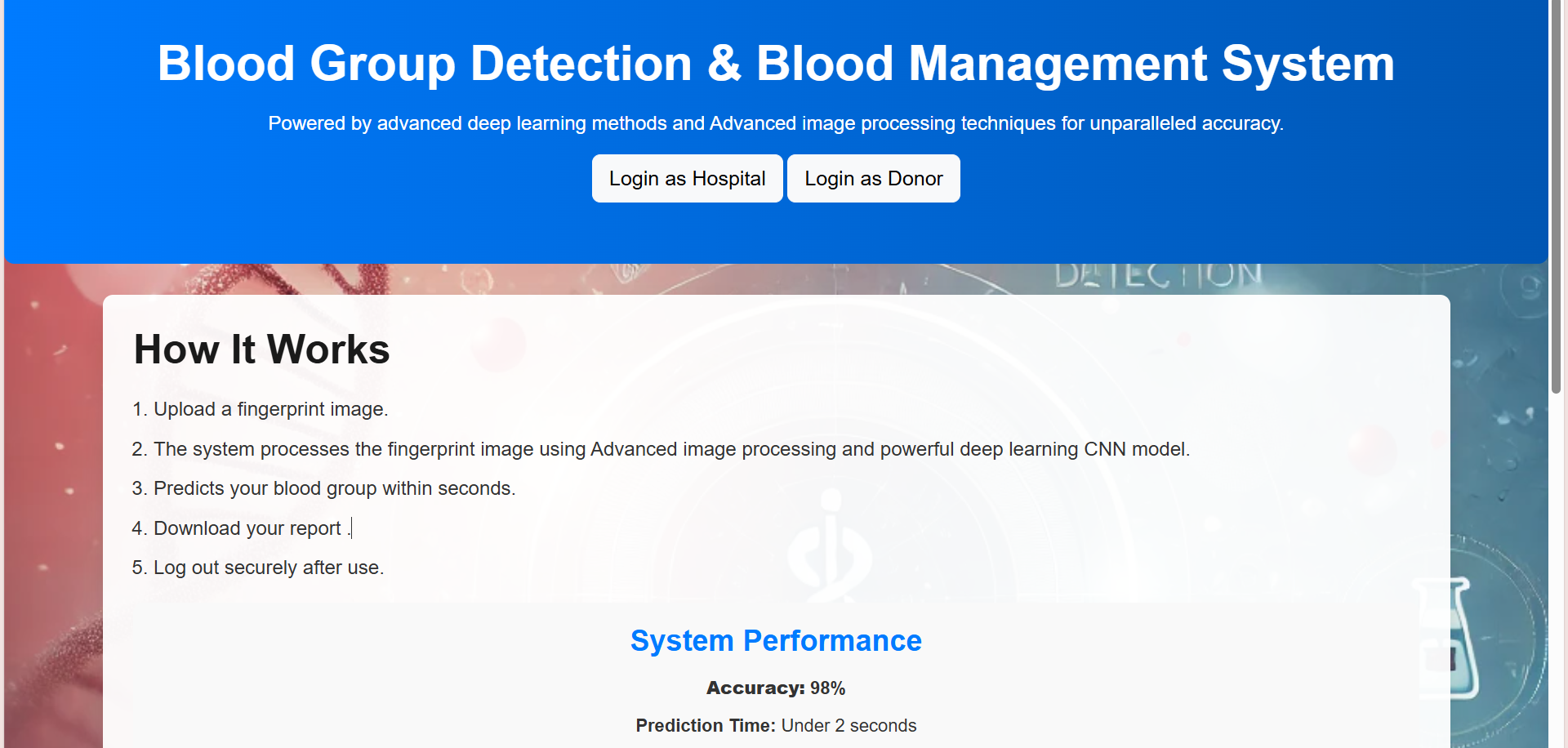
Figure 4.1 Home page Blood group detection And Blood Management system.
Figure 4.1 shows the system's home page and outlines its functionalities This includes the use of Convolutional Neural Networks (CNNs) for blood group prediction. Users can register either as a hospital or a donor, leading to the respective login pages. After authentication, users are directed to their dashboards, with hospitals gaining exclusive access to the blood group prediction feature, starting with individual registration and followed by blood type prediction.
 Figure 4.7: Fingerprint uploading page
Figure 4.7: Fingerprint uploading page
Figure 4.7 shows the webpage where users upload a fingerprint image, which is processed to predict the blood group, with results displayed and the user redirected to the prediction results page.
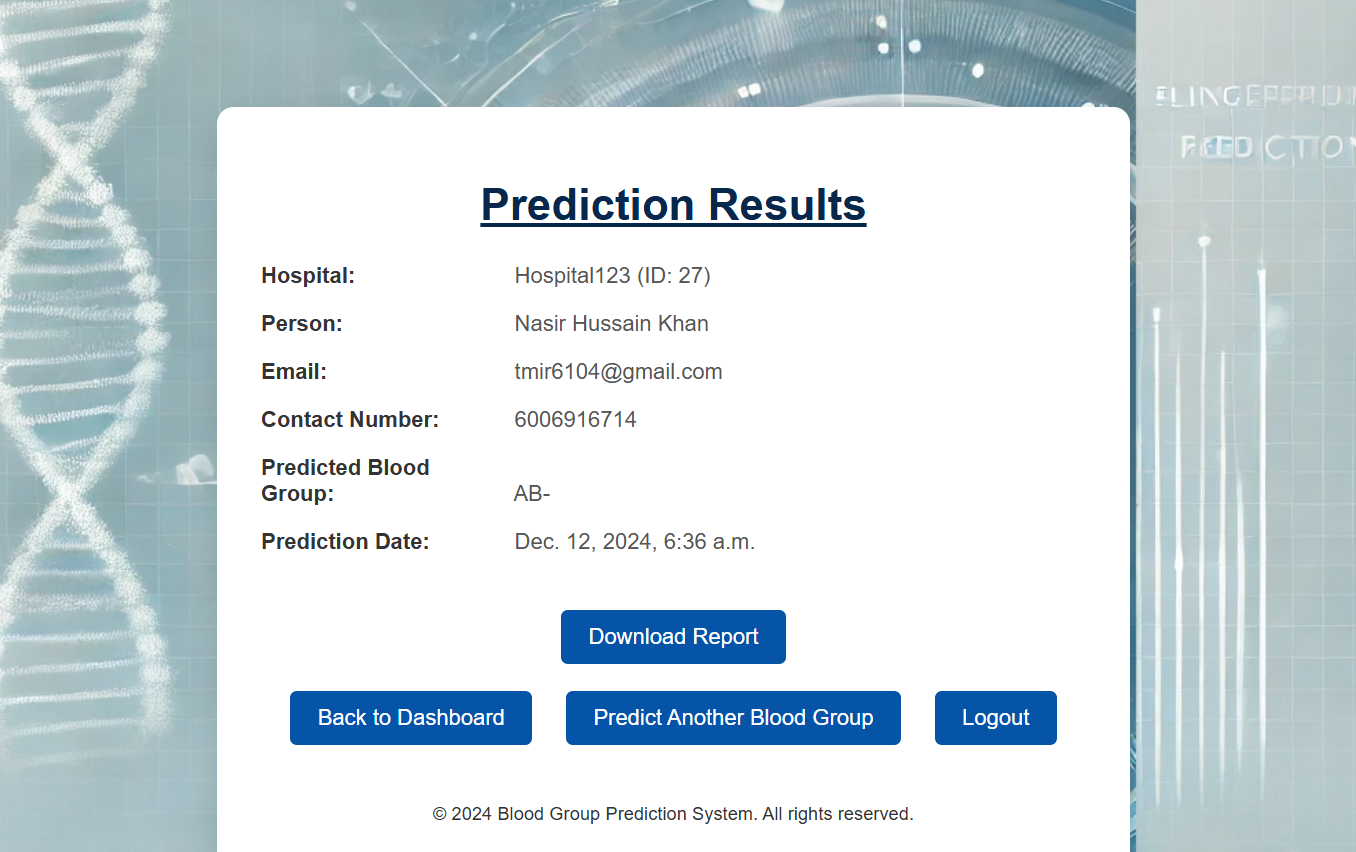 Figure 4.8: Prediction Result Page
Figure 4.8: Prediction Result Page
Figure 4.8 shows the details of the blood group result of the fingerprint image that was uploaded, along with this it also displays the details of the person who had registered and provides the option for downloading the report.
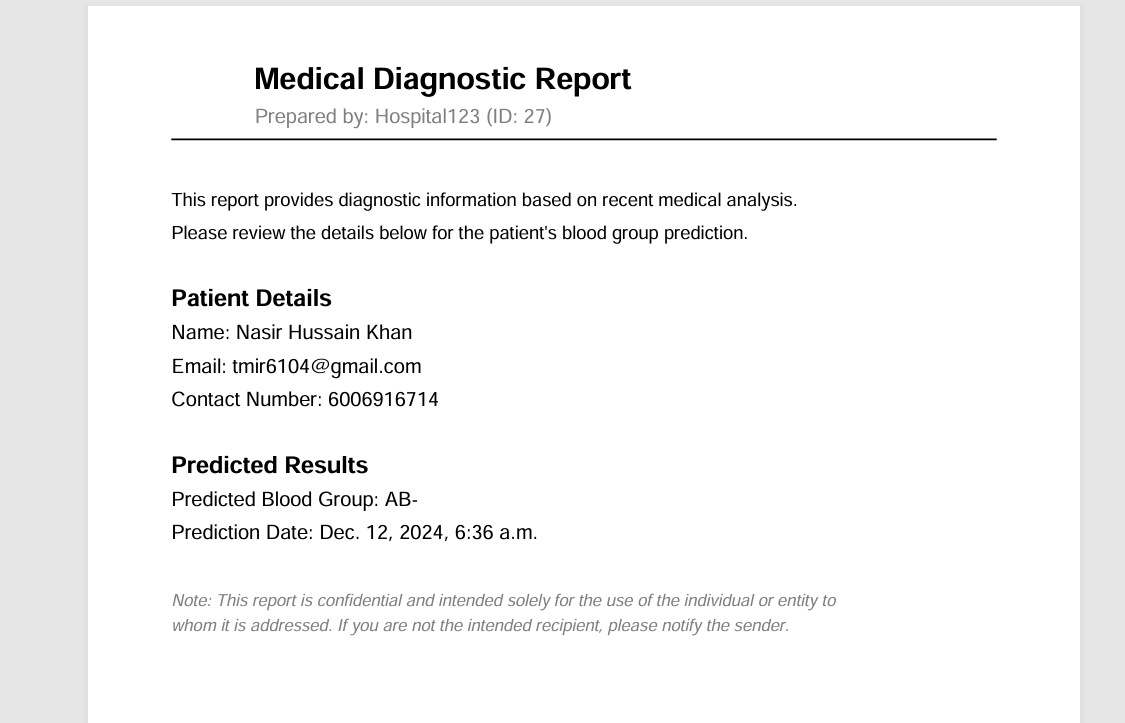 Figure 4.9: Blood Group Report
Figure 4.9: Blood Group Report
Figure 4.9 shows the image of the report that will be downloaded after the successful blood group detection. The medical diagnostic report in a blood group detection app is a crucial feature that provides users with detailed and structured insights into their blood group prediction results. This report is generated after processing the input data through a trained machine learning or deep learning model.
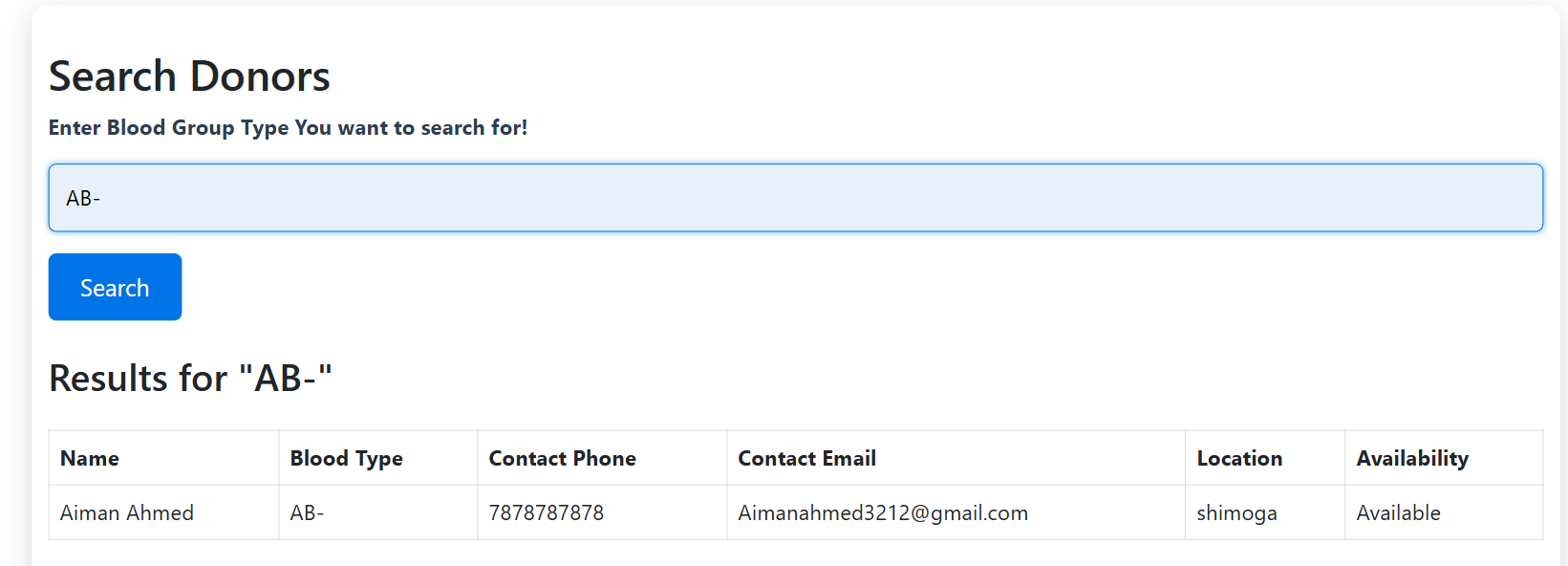 Fig.4.5: Blood group Donor Search System.
Fig.4.5: Blood group Donor Search System.
Figure 4.5 demonstrates a blood donor search system designed for efficient retrieval of donor information based on blood group type and these details will be displayed only donor registers first. Upon entering a specific blood group, such as "AB-", the system presents a detailed list of matching donors. The results include critical details such as the donor's name, blood type, contact number, email address, location, and availability status. This intuitive system streamlines the process of connecting recipients with compatible donors, ensuring timely and accessible assistance in critical situations.
Conclusion
The project successfully demonstrates the feasibility of using fingerprint patterns as a reliable biomarker for blood group determination. By integrating advanced image processing techniques and machine learning algorithms, the proposed system achieves a highly non-invasive, accurate, and efficient solution to blood group identification with an accuracy of 98%. The analysis of ridge frequency and minutiae features, coupled with convolutional neural networks, highlights the potential of fingerprint-based diagnostics in addressing the limitations of traditional methods, such as invasiveness and susceptibility to human error. The results underline the transformative implications for medical emergencies, forensic science, and biometric applications, offering a scalable and innovative approach to personalized healthcare. The platform developed in this project effectively bridges the gap between hospitals and blood donors, enabling seamless communication during emergencies. By facilitating real-time interaction and access to donor information, it enhances the efficiency of the blood donation process. This system ensures that hospitals can quickly identify and contact suitable donors during critical situations, potentially saving lives. Furthermore, the platform\'s user-friendly interface and automated functionalities make it a valuable tool for addressing the pressing need for an organized blood donation network.
References
[1] J. Smith, A. Johnson, and C. Lee, “Fingerprint-based blood group identification using deep learning models,” International Journal of Biomedical Computing, vol. 14, no. 3, pp. 215-228, 2020. [2] A. Gupta, S. Agarwal, and R. Jain, “A machine learning approach to blood group classification using fingerprint ridge patterns,” Journal of Computational Biology and Healthcare Informatics, vol. 7, no.?1, pp. 89–102, Feb. 2022. [3] A. Verma, V. Bhatt, “Automation in blood group detection: A fingerprint analysis approach”, IEEE Transactions on Medical Imaging, vol. (2018), 31(5),?1120-1132. [4] R. Nandakumar, K. Subramanian, Predicting blood groups from fingerprint features using deep learning techniques, Proceedings of the International Conference on Artificial Intelligence in Healthcare, Hyderabad, India, 2017, pp. 55-63. [5] N. Gupta, V. Gour, S. Agarwal, “Fingerprint biometrics for accurate blood group determination: A data-driven approach,” Journal of Medical?Signal Processing and Pattern Recognition, vol. 12, no. 2, pp. 301-314, 2016. [6] M. Prasad, S. Amrutha, “Fingerprint-based blood group detection using enhanced image processing techniques” International Journal of Image?Analysis and Biomedical Applications, vol. 9, no. 2, pp. 145-157, 2019. [7] A. Roy, P Ghosh, “AI based fingerprint Image processing for improvement of Blood Group Classification,”?vie-????????i ????????i, ????????? ????? ???????, ????????? ?????? ??????????? ?????? Hyderabad, 2010. 5, no. 4, pp. 67-78, 2021. [8] R. Nandakumar and K. Subrama, “Fingerprint-based blood group classification with a deep CNN model,” Journal of Machine Learning in Healthcare Applications, vol. 10, no. 3, pp. 121-133, 2017
Copyright
Copyright © 2025 Rashmi V, Nasir Hussain Khan, Krishanu Shekhar, Nisarga T, Anusha C S. This is an open access article distributed under the Creative Commons Attribution License, which permits unrestricted use, distribution, and reproduction in any medium, provided the original work is properly cited.

Download Paper
Paper Id : IJRASET66802
Publish Date : 2025-02-02
ISSN : 2321-9653
Publisher Name : IJRASET
DOI Link : Click Here
 Submit Paper Online
Submit Paper Online

